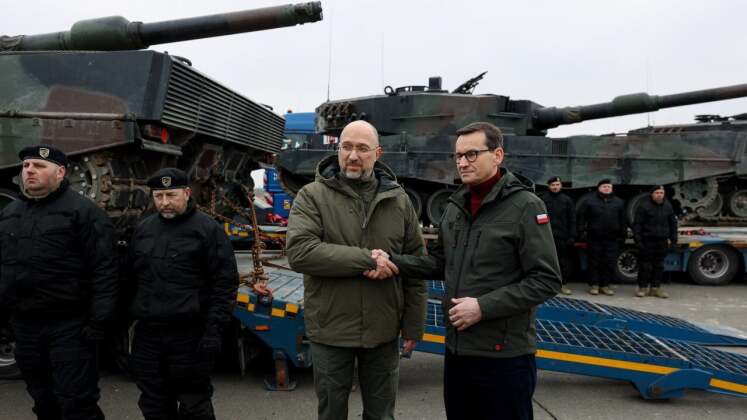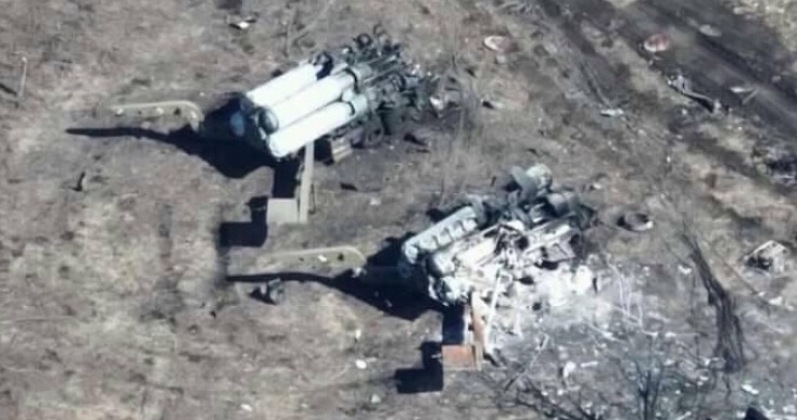News
West Scouring World For Arms For Ukraine: From Japanese Explosives to Jordanian Anti Aircraft Guns
Now past its sixteenth month, the ongoing Russian-Ukrainian War has seen artillery, armour, missiles and all manner of other ground force armaments types expended at extreme rates, which has continued to wear through the stockpiles of both sides rapidly. While Russia has responded by redirecting some of its capacity for export to its own armed forces, and by investing in restoring some of its massive Soviet era productive capacity which was by far the world’s foremost for almost all kinds of ground and aerial warfare equipment, Ukraine’s very limited defence sector has been forced to rely heavily on arms transfers from Western countries after depleting its own Soviet era stockpiles. Although Western powers were in many cases conservative in the armaments they provided to Ukraine, with Britain, Poland and the Baltic States being notable exceptions, this quickly changed as securing a Russian defeat came to be seen as a core Western Bloc interest. As NATO’s own arm stockpiles particularly in Europe have become increasingly depleted, however, Western powers have had to look increasingly far afield to arm Ukraine. Russia meanwhile has supplemented its own expanded capacity for arms production by making limited acquisitions from Iran and North Korea, but benefits from an industrial capacity for ground force equipment thought to exceed those of NATO states combined.

In the latest of many Western efforts to look to new sources for armaments, the United States was reported on June 2 to be looking to acquire TNT from Japan to facilitate expanded production of artillery shells for Ukraine, with TNT shortages thought to have been a major bottleneck preventing greater production. Although Japanese policy prevents the supply of armaments to active war zones, Tokyo is reportedly expected to make an exception on the basis that TNT has non-military uses as part of its policy of supporting the Ukrainian war effort. Japan was one of just three non Western countries to support Western economic sanctions against Russia, alongside Singapore and South Korea, with Seoul having also come under pressure to allow arms supplies to Ukraine culminating in a decision to send artillery from its stockpiles to the U.S. for the purposes of arming Ukrainian forces. TNT from Japanese plants will reportedly be used to manufacture 155mm artillery shells – a calibre the Ukrainian Army has deployed in growing numbers after receiving deliveries from multiple NATO member states. This comes as artillery has widely been seen to have become central to both sides’ war efforts. Although German and Italian artillery supplied to Ukraine has consistently been found to be particularly qualitatively deficient, and often close to totally unusable, guns such as the M777 supplied by the United States have reportedly accounted for themselves well in combat, with American M982 Excalibur guided artillery shells considered a particularly serious threat on the frontlines.

Alongside Japan and South Korea, Morocco and Jordan have emerged as important suppliers of armaments to Ukraine, with the former supplying T-72 tanks while the latter was confirmed on June 1 to be supplying Gepard self propelled anti aircraft guns. Jordan acquired 60 of the guns second hand from the Netherlands in 2013 alongside 350,000 rounds of 35mm ammunition, and has previously supplied anti tank weapons and short range air defence systems to Western powers for the purpose of arming Ukraine. The possibility that Jordan’s retired British Challenger 1 tanks could also be provided has also been speculated repeatedly, as although old they are still considerably more capable than many of the vehicles currently being sent to the war zone such as Leopard 2A4 and M-55 tanks. British intelligence agencies have reportedly been particularly active on African and Middle Eastern black markets seeking to procure what arms are available for the Ukrainian war effort.

Regarding ongoing efforts to procure armaments for Ukraine, British Defence Secretary Ben Wallace warned on June 2 that the rapid rate at which Western stockpiles have been depleted has forced Western countries to look to international markets to procure arms for the war effort against Russia. “We have seen reality, which is that we are all running out,” he stated regarding the quantities of armaments NATO members had remaining. Warnings have grown increasingly dire regarding the state of Ukrainian stockpiles, with its air defences in particular, which Western powers have had only a very limited capacity to replenish, considered near the brink of collapse due to their depletion. Britain and its European allies responded by placing considerable pressure on the United States to allow the provision of F-16 fighter aircraft to Ukraine which could partly compensate for the growing limitations of its surface to air missile capabilities by providing an improved air to air capability. The age of the F-16, however, and lack of availability of modern variants, has brought their viability for such high intensity combat against an adversary with world leading air defence capabilities into question, with the fighter class having served since the 1970s and having few survivability advantages over Soviet built jets Ukraine already fields.

London has also played a leading role in dispatching its ground forces to the conflict zone, with Royal Marines confirmed to have been on the frontlines conducting high risk missions against Russian forces from April 2022, while SAS units are also widely reported to be present. These have operated as part of a much wider ‘stealth network’ of Western personnel on the ground performing roles from actual combat to logistics and command and control. NATO’s satellite network and airborne surveillance and electronic warfare assets have also played important roles, as have contractors from multiple Western states. Growing numbers of analysts have predicted that the issue of arms quantities and the industrial attritional nature of the war means the availability of large quantities of armaments will likely be a primary deciding factor in the war – with whichever side sees its operations seriously constrained by shortages first likely losing. Arming Ukraine has accordingly been prioritised so highly that very serious depletion of domestic capabilities in NATO members’ armies has frequently been tolerated.












